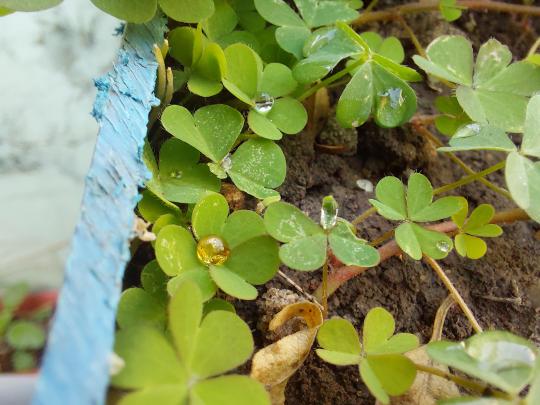#Oxalis stricta
Text
common yellow wood sorrel.
21 notes
·
View notes
Text
Glowing In Dark Times

Wood Sorrel weeds lighting up a dark landscape. Photo credit: Jonathan Chua.
This was lit by the early afternoon sun. Three stops of underexposure were needed to darken further the already dark background in this capture.
#photographers on tumblr#canon 55-250mm#flora fauna#flora photography#flower pics#olympus em1#olympus photography#Oxalis stricta#photography tips#weed photos#yellow wood sorrel
2 notes
·
View notes
Video
n82_w1150 by Biodiversity Heritage Library
Via Flickr:
Rocky Mountain flowers :. New York :H. W. Wilson,1920, c1914.. biodiversitylibrary.org/page/40859494
#Rocky Mountains#New York Botanical Garden#LuEsther T. Mertz Library#bhl:page=40859494#dc:identifier=https://biodiversitylibrary.org/page/40859494#Mallows#Flax#Oxalis#Spurge#Geranium#1. Linum perenne : Flax#2. Oxalis stricta : Wood Sorrel#3. Sidalcea neo-mexicana#7. Malvastrum coccineum#8. Callirhoe involucrata: Poppy Mallow#4. Euphorbia marginata : Snow-on-the-mountain#5. Erodium cicutarium : Storksbill#Alfilaria#6. Geranium caespitosum : Cranesbill#artist:name=Edith Schwartz Clements#flickr#flower#flowers#plant#plants#wildflower#wild flower#wildflowers#wild flowers#botany
0 notes
Text

Yellow wood sorrel..Oxalis stricta
This tiny clump of sorrel with its heart shaped leaves seems to have followed me home..
253 notes
·
View notes
Photo

Yellow Wood Sorrel, Oxalis stricta ~ Oregon, USA
By summerwages
63 notes
·
View notes
Text
Native Plants I’ve Actually Seen Growing Wild in Southern Ontario
Acer saccharinum (silver maple) --along the sides of highways
Acer saccharum (sugar maple) --GTA ravines
Achillea millefolia (yarrow) --GTA ravines
Allium schoenoprasum (wild chives) --GTA ravines, Ridgetown
Allium tricoccum (ramps) --Niagara region escarpments
Amaranthus retroflexus (redroot amaranth) --fallow areas in the GTA
Ambrosia artemisiifolia (ragweed) --fallow areas in the GTA
Ambrosia trifida (giant ragweed) --parks in the GTA
Amelanchier spp. (saskatoon/serviceberry) --GTA ravines
Arisaema triphyllum (Jack-in-the-pulpit) --GTA ravines
Aronia melanocarpa (black chokeberry) --ravines and parks in the GTA
Asarum canadense (Canada ginger) --GTA ravines
Asclepias syriaca (common milkweed) --fallow areas, ravines, and parks throughout southern Ontario from Windsor to GTA
Asplenium trichomanes (maidenhair spleenwort) --Niagara region escarpments
Betula spp. (birch) --ravines and parks throughout southern Ontario from Windsor to GTA
Bidens spp. (beggar ticks) --GTA ravines
Caulophyllum thalictroides (blue cohosh) --GTA parks
Ceratophyllum demersum (hornwort) --GTA ravines (native in freshwater across the globe anyway)
Circaea lutetiana (enchanter’s nightshade) --fallow areas in the GTA
Commelina spp. (dayflower) --fallow areas in Windsor
Cornus alternifolia (Pagoda dogwood) --GTA wooded areas
Cornus sericea (red osier dogwood) --GTA ravines and in Windsor riverside parks
Crataegus spp. (hawthorn) --GTA ravines and parks
Echinocystis lobata (wild prickly cucumber) --GTA ravines
Elaeagnus commutata (silverberry) --GTA parks and fallow areas
Epilobium ciliatum (fringed willowherb) --fallow areas in the GTA
Equisetum spp. (horsetail/scouring rush) --GTA ravines and fallow areas
Erigeron spp. (fleabane) --GTA parks and fallow areas, Ridgetown
Erythronium americanum (trout lily) --GTA ravines and parks
Eutrochium maculatum (Joe-Pye weed) --GTA parks
Fragaria virginiana (wild strawberry) --fallow areas in the GTA
Geranium maculatum (wild geranium) --Windsor green spaces
Geranium robertianum (herb robert) --Windsor green spaces
Geum aleppicum (yellow avens) --GTA fallow areas
Geum canadense (white avens) --GTA fallow areas
Geum macrophyllum (large-leaved avens) --GTA fallow areas
Gymnocladus dioicus (Kentucky coffee tree) --GTA ravines
Helianthus spp. (sunflower) --GTA fallow areas and parks
Heracleum maximum (cow parsnip) --GTA ravines
Hordeum jubatum (foxtail barley) --GTA fallow areas
Humulus lupulus (hops) --GTA ravines
Hydrophyllum virginianum (Virginia waterleaf) --GTA ravines
Impatiens capensis (jewelweed) --GTA ravines and in Windsor riverside parks
Juglans nigra (black walnut) --GTA ravines
Lactuca canadensis (Canadian lettuce) --GTA fallow areas
Lilium michiganense (Michigan lily) --GTA ravines
Lupinus perennis (sundial lupine) --GTA parks
Maianthemum canadense (Canada mayflower) --GTA ravines
Maianthemum racemosum (starry false solomon’s seal) --GTA ravines and parks
Maianthemum stellatum (starry false solomon’s seal) --GTA ravines
Matteuccia struthiopteris (ostrich fern) --GTA ravines
Monarda fistulosa (wild bergamot) --GTA ravines and parks
Morus rubra (red mulberry) --fallow areas in Windsor, GTA parks
Myosotis laxa (smallflower forget-me-not) --GTA fallow areas
Oenothera biennis (evening primrose) --GTA fallow areas
Onoclea sensibilis (sensitive fern) --GTA ravines
Oxalis stricta (yellow wood sorrel) --fallow areas and ravines throughout southern Ontario from Windsor to GTA
Parietaria pensylvanica (Pennsylvania pellitory) --GTA fallow areas
Parthenocissus quinquefolia (Virginia creeper) --Windsor fallow areas and GTA ravines and parks
Persicaria lapathifolia (curlytop smartweed) --GTA fallow areas
Podophyllum peltatum (mayapple) --GTA ravines and parks
Portulaca oleracea (purslane) --fallow areas throughout southern Ontario from Windsor to GTA (native globally anyway)
Potentilla norvejica monspeliensis (ternate-leaved cinquefoil) --GTA fallow areas
Prunella vulgaris (selfheal) --fallow areas and ravines throughout southern Ontario from Windsor to GTA
Prunus virginiana (chokecherry) --Windsor fallow areas, GTA ravines and parks, Niagara region escarpments
Pteridium aquilinum latiusculum (western bracken fern) --GTA parks
Quercus spp. (oak) --wooded areas throughout southern Ontario from Windsor to GTA
Rhus typhina (staghorn sumac) --parks and fallow areas throughout southern Ontario from Windsor to Collingwood
Ribes spp. (currants) --GTA ravines and parks
Ribes spp. (gooseberries) --GTA ravines
Robinia pseudoacacia (black locust) --GTA ravines and parks
Rosa spp. (roses) --GTA ravines, parks, and fallow areas
Rubus occidentalis (black raspberry) --ravines, parks, and fallow areas in Hamilton and GTA
Rubus odoratus (purple-flowered raspberry) --GTA ravines and parks
Rubus strigosus (American red raspberry) --GTA parks
Rudbeckia hirta (black-eyed susan) --GTA parks
Salix spp. (willow) --GTA ravines
Sambucus canadensis (common elderberry) --Windsor riverside parks, GTA ravines
Sambucus racemosa (red elderberry) --GTA ravines and parks
Smilax spp. (greenbrier) --GTA parks
Solidago canadensis (Canada goldenrod) --parks and fallow areas throughout southern Ontario from Windsor to GTA
Sorbus spp. (mountain ash) --GTA ravines and parks
Streptopus spp. (twistedstalk) --GTA parks
Symphoricarpos spp. (snowberry) --GTA parks
Symphyotrichum ericoides (heath aster) --fallow areas throughout southern Ontario from Windsor to GTA
Symphyotrichum novae-angliae (New England aster) --fallow areas throughout southern Ontario from Windsor to GTA
Symplocarpus foetidus (skunk cabbage) --GTA parks
Tilia spp. (linden) --GTA ravines
Trillium grandiflorum (white trillium) --parks throughout southern Ontario from Windsor to GTA
Tsuga canadensis (eastern hemlock) --GTA parks
Typha latifolia (broad-leaved cattail) --marshes in Essex county and GTA
Urtica gracilis (slender nettle) --GTA ravines
Uvularia spp. (bellwort) --streams in Windsor green spaces
Verbena hastata (blue vervain) --GTA ravines
Viburnum lentago (nannyberry) --GTA parks and Ridgetown ravine
Viburnum trilobum (highbush cranberry) --Ridgetown
Viola sororia (wood violet) --fallow areas and wooded areas throughout southern Ontario from Windsor to GTA
Vitis riparia (riverbank grape) --GTA fallow areas, ravines, and parks
Waldsteinia fragarioides (barren strawberry) --GTA ravines and parks
Xanthium strumarium canadense (Canada cocklebur) --GTA parks and fallow areas
I’ve likely seen many others and just couldn’t identify them, but there are a lot I’ve never seen growing wild. What I’m hoping is that some of the native species I have in my garden will make their way to the nearby ravine. If I get around to it, though, I might just take a walk with some Asclepias incarnata (swamp milkweed) seeds in the fall. They certainly seem to successfully germinate in my garden whether I want them to or not (don’t have space for them to go crazy). Can’t see why they wouldn’t in a natural swamp area.
#text post#long text post#native plants of Ontario#native plants of North America#wild native plants
10 notes
·
View notes
Text

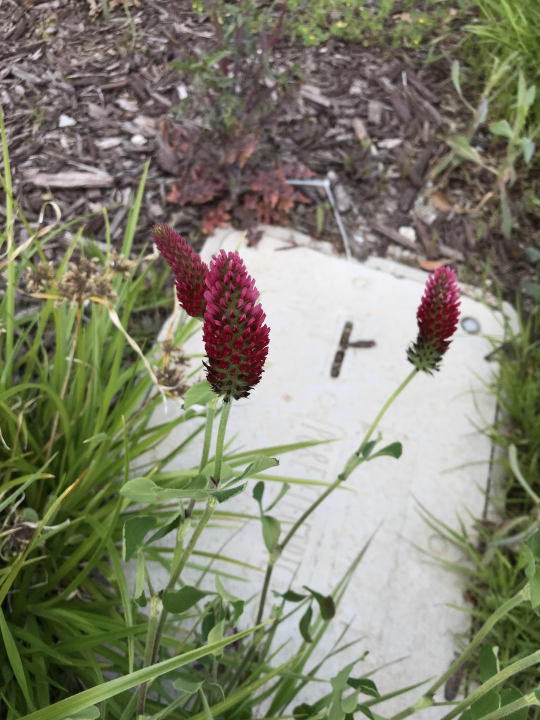
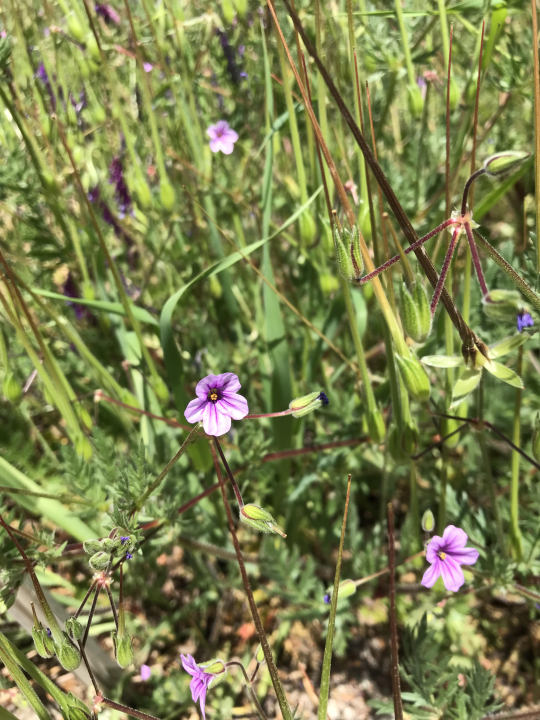
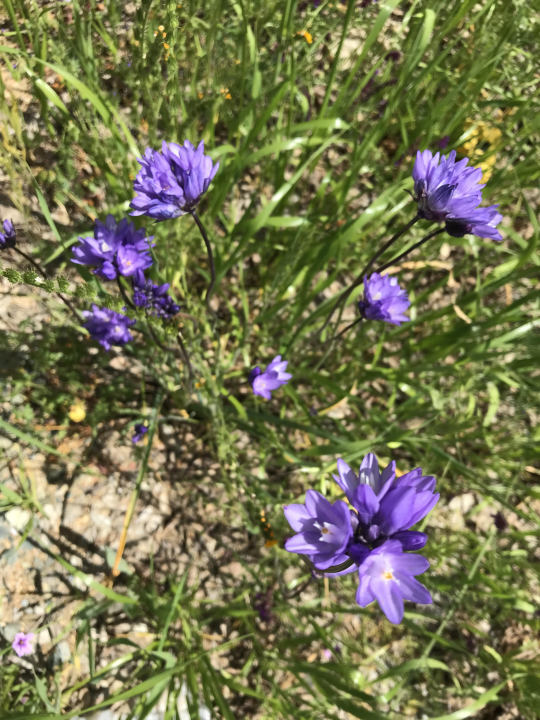

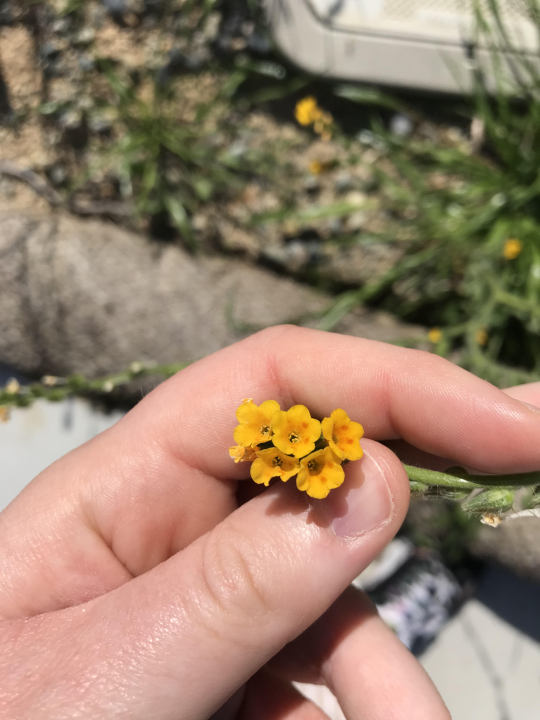
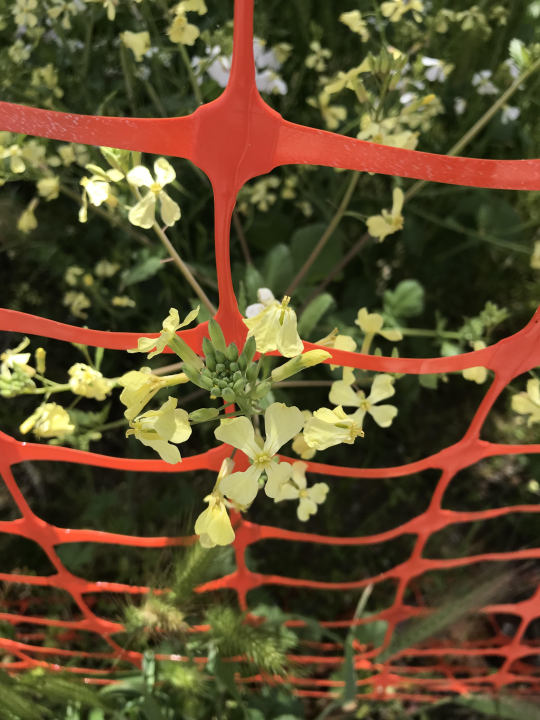
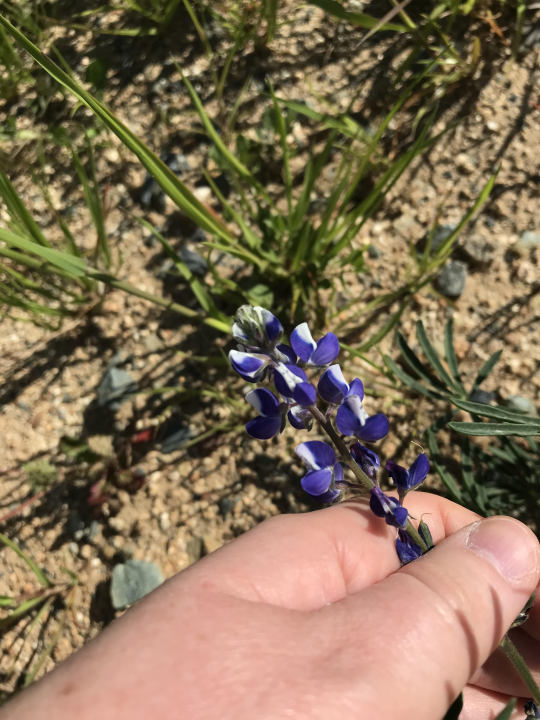
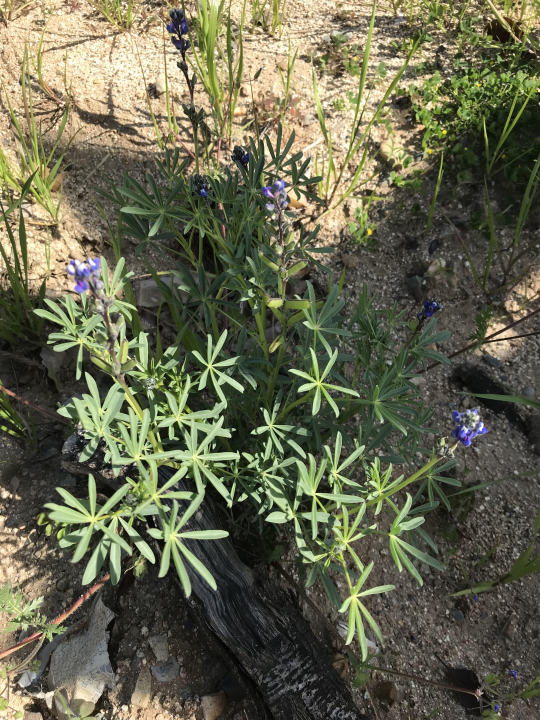
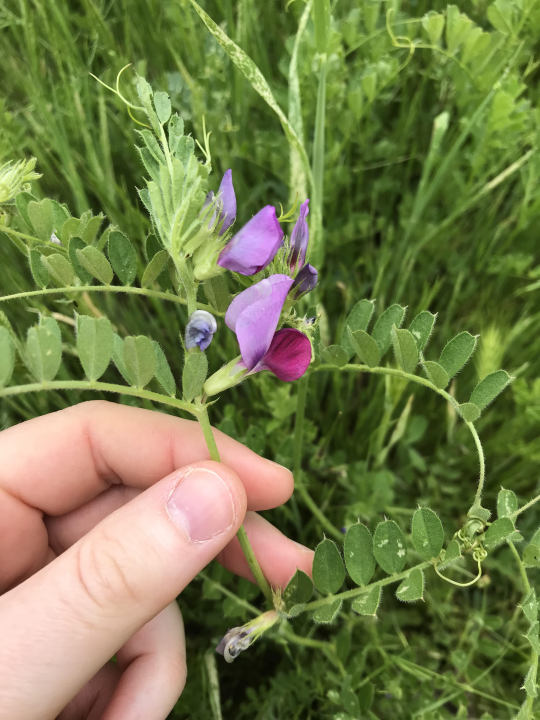
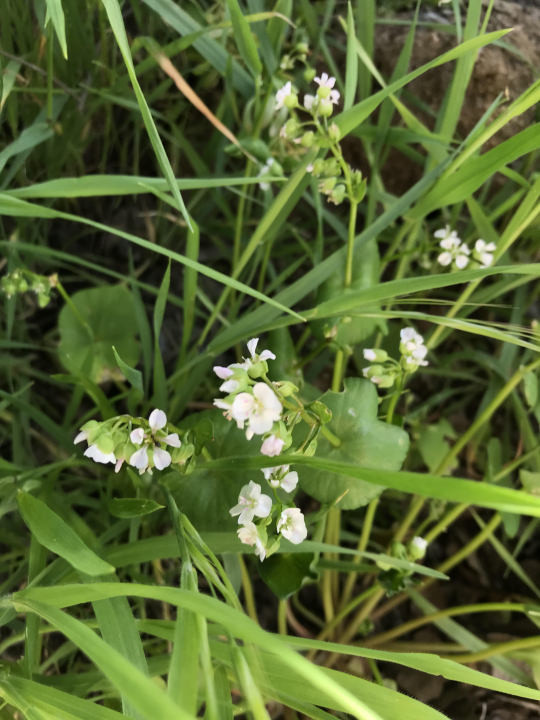

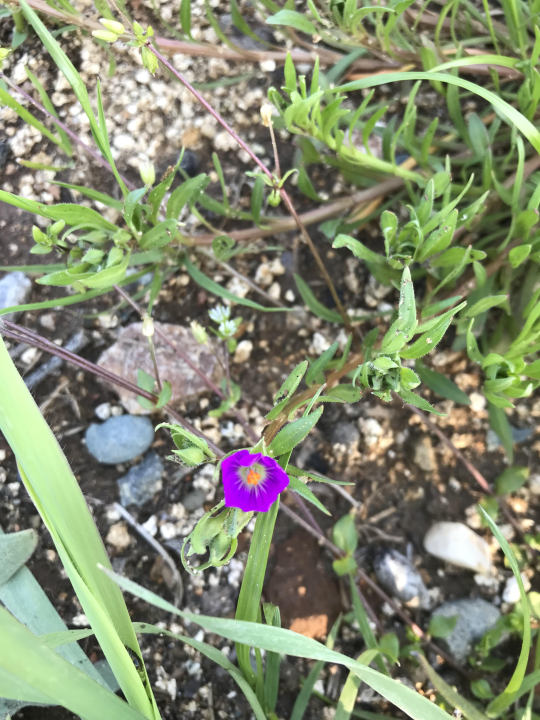
Flowering 'Weeds' in my Neighborhood
Hello and welcome to my informal tour of some of the flowers in my California neighborhood. I just wanted to identify them when I got home so I made this post. We tend to take these plants for granted but I wanted to learn more about them. Forgive the photo quality, my phone is a potato but I am upgrading it soon. (Also I was being kind of lazy with these photos, since it was just for IDing and not for looks)
1.) Yellow Woodsorrel (Oxalis stricta or Oxalis corniculata)
These itty bitty yellow flowers (and clover-like leaves) often found in lawns are apparently woodsorrels, in the genus Oxalis. The flowers are around the same size as Scarlet Pimpernell (Anagallis arvensis), another little flower often found growing in lawns around here. Plants in this genus are edible, apparently, and have a nice sour tanginess to them. All parts are edible and can be eaten raw or cooked, and are nice in salads, I'm told.
It seems the plants in this genus have a wide range of flower sizes, because this genus also includes Oxalis pes-caprae, which has the same clover-like leaves, but it has yellow flowers that are ~1 - 1.5 inches large, which grow on long stalks. This species is known colloquially as Sourgrass where I'm from, and as a kid I often picked the flowers to chew on the sour stems. Plants of this genus are often invasive here, but there are also lots that are native to California.
2.) Crimson Clover (Trifolium incarnatum) - Invasive
Often used for erosion control (even though it out-competes other plants, including natives), for feeding livestock, or as a nitrogen-fixing cover crop. The seeds, sprouts and flowers are edible for humans, too. The red flowers are very beautiful and bees love them.
3.) Long-beaked Storks Bill (Erodium botrys) - Invasive
Another common sight in California yards is the Storks Bill, named after the long, pointy seed pods that look like little spears. My mother passed on the suburban lore to me and my little brother when we were kids, explaining how you can push one of these pointy seed-pods into another one and create a pair of scissors with them. Therefore we referred to these as "scissors plants." However, the plant's seed pods are most interesting when they break open explosively. The seeds that immerge look like sharp little corkscrews that bury themselves in the earth. This plant is reportedly edible, and typically the leaves are eaten when the plant is young. The plant has pretty little pink/purple stripey flowers in the spring.
4.) Blue Dicks (Dipterostemon capitatus) - Native
A beautiful California native wildflower. It has a history of being an important food source for Native Americans. The part eaten was the 'corm,' which is similar to a tuber and also starchy. There is a similar-looking native flower called Forktooth Ookow (Dichelostemma congestum) but this site shares how to tell them apart.
5 - 6.) Common Fiddlenecks (Amsinckia menziesii) - Native
These pretty yellow flowers grow in clusters that gradually unfurl like the neck of a fiddle. Goldfinches love the seeds and it's an important host plant for some insects; its flowers are also valued by pollinators.
They are unpalatable plants to livestock (they have itchy hairs), which is good because they are toxic to livestock if eaten in large amounts. (This typically will not happen unless their feed becomes contaminated with it, since as I mentioned, they dislike eating the plants!) It's probably best that humans don't try to eat this plant, as a result. It's also best to not grab these plants like I did in the photo, haha, because the hairs can irritate skin. (Didn't bother me, but ymmv)
7.) Wild Radish (Raphanus raphanistrum) - Invasive
This plant is in the mustard family (Brassicacea). As you may know, the mustard family is very important to humans, and includes a bunch of cultivated crops (cabbage, broccoli, kale, turnips, radishes, etc). As such, all parts of this plant are very edible, and it has a reportedly peppery taste. It's invasive here in California so you don't need to feel bad about harvesting it. They also hybridize readily with cultivated radish. It's a very hardy plant that has spread all over. You see these guys everywhere, in ditches on the side of the road, etc.
8 - 9.) Lupines/Blue Bonnets [possibly Coulter's lupine (Lupinus sparsiflorus)?]
This genus, the Lupins, is a very large genus and many of the varieties have been cultivated by humans for both food and for looks. However, some varieites are native to California, such as Coulter's lupine. They are very pretty flowers that look similar to pea plants, because it is in the same family (Fabaceae). Lupin beans are edible but need to be processed correctly first, or else they can poison you (the same is true of many popular legumes). The ones that have been bred for eating require less processing.
10.) Common Vetch (Vicia sativa) - Naturalized
Another wildflower in the same Fabaceae family, Vetch also has gorgeous little purple flowers and produces little pea pods too. It's valued as livestock fodder and as green manure/rotation crop, and like the Lupins, its seeds need to be processed properly before humans eat it. The plant is very 'grabby' and will use plants nearby to help prop it up as it grows. So, if you have something else in your garden, you might need to pull out vetch if it's grabbing your plants.
11.) Miner’s Lettuce/Spring Beauties/Winter Purslane (Claytonia perfoliata) - Native
This native plant has big, cronchy leaves that I'm told taste excellent in salads. They tend to grow after a good rain, during winter or early spring, in damp, shady areas. The plant had been used as food by Native Americans for a long time, and when white people arrived in droves in California for the gold rush, they ate it too; thus the name 'Miner's Lettuce.' Their leaves kind of look almost like lily pads, and little white flowers grow in the center. They're quite recognizable once you notice them, and they're very nutritious, apparently.
12.) Burr Clover/Burr Medic (Medicago polymorpha) - Naturalized
Considered useful for livestock fodder, erosion control and soil improvement. It has little yellow flowers and its seed pod is a pokey little burr. It grows very low on the ground, often found in lawns. It's edible, especially the young leaves. The seeds are apparently edible too but there's only one seed per burr and it's rather demanding to gather and process, as you might imagine.
13.) Red Maids (Calandrinia menziesii) - Native
I found this lone little flower among all the other wildflowers around here after the rains. Apparently it's a Red Maid, which used to be considered a type of purselane, but has recently switched families, according to Wiki at least. The greens can be cooked and the seeds toasted.
2 notes
·
View notes
Note
Any tips on IDing Oxalis by flower?
Idk I've just seen a lot of them. If it's small (around 1cm) and yellow (usu. with some orange streaks around the center) and that shape it's probably either O. corniculata or O. stricta. Between those two the species can only really be determined by prostrate vs upright growing habit and region. So I'm actually not 100% confident the quail is wearing O. corniculata (but it is cosmopolitan so like.... its everywhere, O. stricta isn't)
5 notes
·
View notes
Text
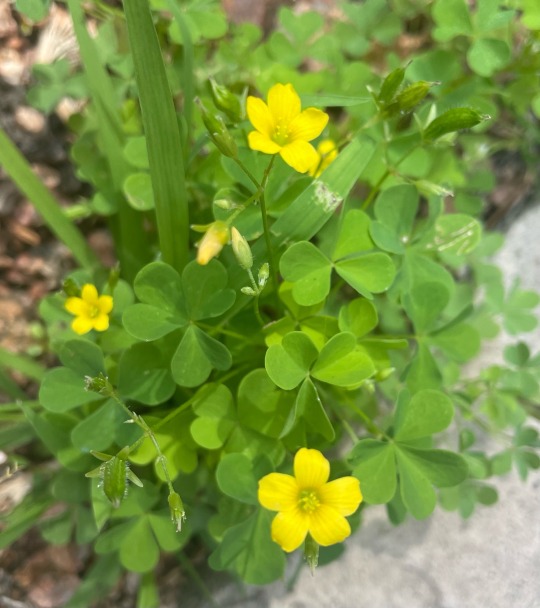
A batch of yellow wood sorrels (oxalis stricta), also known as Oxalis. High concentration of vitamin C, phosphorus, and potassium which made it a popular folk remedy for various ailments. The oxalic acid in this plant can also cause stomach upset so careful use is recommended.
7 notes
·
View notes
Text
"Erect when young, this plant later becomes decumbent as it lies down, and branches regularly"
oxalis stricta suffers from age-related erectile dysfunction
1 note
·
View note
Text

I posted 2,194 times in 2022
That's 1,134 more posts than 2021!
47 posts created (2%)
2,147 posts reblogged (98%)
Blogs I reblogged the most:
@wizardpotions
@dreams-in-daylight
@canwriteitbetterthanueverfeltit
@natasharomanovofficial
@catchymemes
I tagged 89 of my posts in 2022
#music recommendation - 9 posts
#soundcloud - 9 posts
#dream pop - 9 posts
#music - 9 posts
#indie - 8 posts
#retro - 7 posts
#bedroom pop - 7 posts
#sonny boy - 5 posts
#recommended song - 5 posts
#skyrim - 4 posts
Longest Tag: 41 characters
#tumblr ads style really hit close to home
My Top Posts in 2022:
#5
Oxalis stricta : hey can i copy your homework?
Trifolium : yea, but change it a bit so it doesnt look obvious you copied
Oxalis stricta :

1 note - Posted January 29, 2022
#4
2 notes - Posted August 28, 2022
#3
Kicked out of my aunt house. Life is great, i think.
2 notes - Posted July 23, 2022
#2
3 notes - Posted February 1, 2022
My #1 post of 2022

4 notes - Posted August 20, 2022
Get your Tumblr 2022 Year in Review →
#tumblr2022#year in review#my 2022 tumblr year in review#your tumblr year in review#false#SoundCloud
2 notes
·
View notes
Text
Plant Dye Making Notes - “Lemon” Yellow
(Sorry Tumbr you’re gonna be used for note-taking now. Tag system works too well. Anyone who see this too much and don’t want can block first tag. Just need good list of simple dyes to make because I’m too absent-minded to use any heavy metals and too cheap to buy good-quality commercial dyes.)
Sour-grass/ yellow Oxalis - Oxalis pes-caprae, Oxalis stricta
Dye made from flowers
O. pes-caprae wild in South Africa - check before taking
O. stricta wild in North America - check before taking
Invasive to other places - take as wanted but don’t spread roots!!
Low risk - but toxic if eat large amounts
Colour:
Yellow
Saturated, not muddy
Pale to intense colour
Bright + distinct, not muddy
Can turn golden/ golden brown/ orange / warm brown if adding bicarb soda
Dye process
Petals put in cold water (overnight) or boiling water (30 minutes)
Dye is acidic - bicarb/ alkaline materials will cause fizzing, especially in hot water - careful of splashes/ overflows
Strain out petals before dying fabric
? Possibly can use on un-prepared natural fibres. Possibly can use as ink paint
Good information links:
https://www.annacarolynmeier.com/post/manage-your-blog-from-your-live-site
https://honestlywtf.com/diy/diy-natural-sourgrass-dye/
#Newt's natural dye notes#Newt's yellow dyes#Newt's orange dyes#Newt's brown dyes#fibre art#natural dyes#fabric dyes#remember please be careful taking plants from natural range#my area's invasive plant is somewhere else's vital pollen source!#check if plants are invasive In Your Area before removing them#Oxalis
1 note
·
View note
Text
Wood Sorrel Folklore and Magical Properties
Take a look at your lawn. Unless you maintain it to putting-green smoothness, you’re likely to see some yellow flowers.
Not the dandelions — look closer.
You might mistake them for buttercups at first, but they’re really quite different. These little yellow five-petaled flowers are yellow wood sorrel (Oxalis stricta). They’re a native wildflower where I live, and vastly superior to the grass…
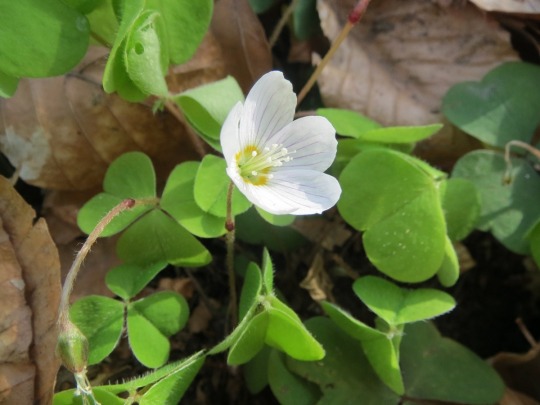
View On WordPress
0 notes
Text
Varieties of oxalis triangularis plants to grow in your garden
If you want to grow a low-maintenance house plant that can be available in different sizes and colors to give your garden a mesmerizing look, then no doubt oxalis triangularis will be a better option for you to look after.
An oxalis triangularis plant is a small, bulb plant that can grow up to 5 - 7 inches tall.
This plant is otherwise known as purple shamrock due to its beautiful purple foliage and false shamrock as its thin, triangular leaflets greatly resemble a lucky clover plant.
Being a low-maintenance plant with its vibrant beauty, you might be interested to know the growing guide oxalis triangularis with its varieties.
Let's dive into the varieties of oxalis triangularis to grow in your garden.
Varieties of oxalis triangularis
There are a lot of varieties of oxalis triangularis that can be grown for decorative and medicinal purposes.
The important varieties of this plant include the following

Oxalis stricta ( North American wood sorrel)
Oxalis stricta or commonly called North American wood sorrel or common yellow wood sorrel plant is native to Eurasia and North America.
With yellow flowers and heart-shaped leaves, this plant is a profuse seeder that makes it a weedy plant.
The leaves of the plant grow in the group of three from the tips of the green stem that curl up at night and open during the day.
With various medical properties, it is a sour-tasting medicinal plant that can be used to treat fever, nausea, and stomach cramps. Theis plants are also used for drying clothes.
This plant is highly rich in Vitamin C, potassium oxalate, and oxalic acid that can be used to treat kidney diseases in humans.
Oxalis Acetosella ( Common wood sorrel)
Oxalis Acetosella or popularly recognized as common wood sorrel is native to Asia and Europe.
With small white flowers that bloom in spring and heart-shaped leaves that grow in threes from the tip of thin, reddish, and brown stems, this is a plant that sours because of its taste.
Oxalis Acetosella is a pretty woodland wildflower, with a low creeping herb found in woodland, on hedgerows, moist places, on banks of the river, in shaded places, and in habitats throughout the British Isles.
This medicinal plant has numerous medicinal properties that can be used to treat nausea, sore throat, and alleviating cramps.
This plant often acts as a weathervane where its leaves fold up in the dark and before and during rain.

Oxalis Albicans (Hairy wood sorrel)
Oxalis Albicans or popularly named hairy wood sorrel or white oxalis is the popular variety of oxalis plant that is native to the Southwestern United States, California, and northern Mexico.
This small plant with a height of 6 inches is recognized by its small yellow flowers that bloom all the season and fuzzy green, heart-shaped leaves in the group of three.
The seed of the plant profusely sprouts easily and thus it is commonly considered an invasive weed.
This plant is used as a houseplant indoors as well as an outdoor plant in the garden.

Oxalis Regnellii (Lucky Shamock)
Oxalis regnellii or popularly referred to as Lucky Shamrock or purple leaf shamrock is a popular variety of oxalis triangularis that is native to South America.
This plant bears white flowers throughout the year and possesses large triangular purple leaves that grow in threes.
This is an easy-to-grow garden plant and an attractive plant in rock gardens and borders.
The petals of the plant are heavily used for lovely decoration to the platter of food. But consuming it heavily can be severely hazardous to your health.
0 notes
Text
I like that there are native species that just like put themselves in my garden.
Virginia creeper (Parthenocissus quinquefolia), northeastern black cherry tomato (Solanum ptychanthum), smallflower forgetmenot (Myosotis laxa), yellow wood sorrel (Oxalis stricta), white avens (Geum canadense), yellow avens (Geum aleppicum), common wood violet (Viola sororia), and fringed willowherb (Epilobium ciliatum) were already there when I moved in. Then zigzag goldenrod (Solidago flexicaulis), Canada goldenrod (Solidago canadensis), spotted St. John’s wort (Hypericum punctatum), and horseweed (Erigeron canadensis) followed. And this year I have a new one! Ternate-leaved cinquefoil (Potentilla norvegica monspeliensis).
4 notes
·
View notes

